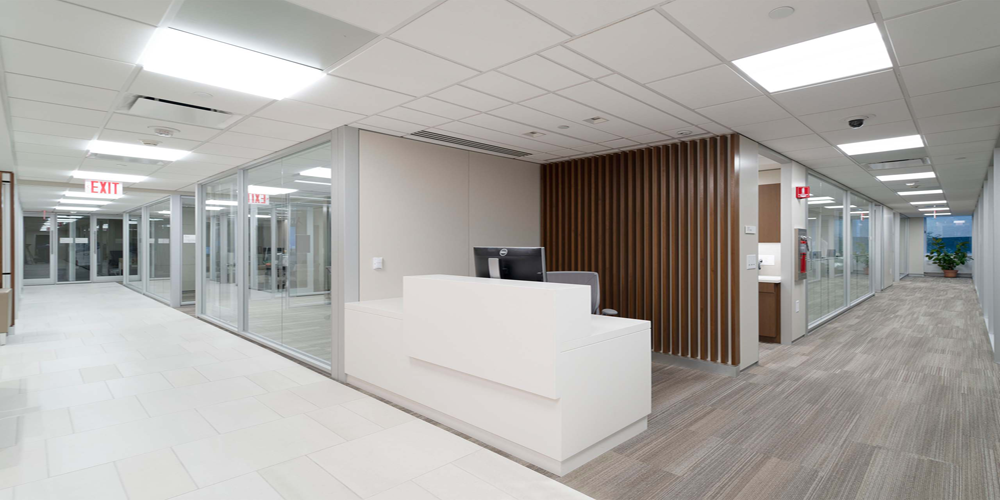Nurses’ Stations in Healthcare: Beyond a Desk
In the intricate web of healthcare facilities, where every corner echoes with the rhythm of healing, the nurses’ station stands as a pivotal hub. It’s not merely a physical space but a dynamic nucleus where care converges, information disseminates, and collaboration thrives.
While often seen as a mundane fixture, the nurses’ station plays an intrinsic role in the functioning of healthcare institutions, impacting patient outcomes, staff efficiency, and the overall quality of care. This discourse delves into the multifaceted dimensions of nurses’ stations, unraveling their significance beyond the surface.
Understanding the Nurses’ Station
At its core, the nurses’ station serves as the nerve center of patient care units. Traditionally envisioned as a centralized desk where nurses manage paperwork and administrative tasks, its essence transcends the physical structure. It symbolizes connectivity, coordination, and competence in healthcare delivery. Positioned strategically within the unit, it fosters accessibility to patient rooms, medical equipment, and essential resources. However, its true value lies in facilitating communication and collaboration among healthcare professionals, thus enhancing the continuum of care.
Communication Hub
Communication lies at the heart of effective healthcare delivery. The nurses’ station acts as a conduit for exchanging critical information among care team members. From relaying patient updates to coordinating treatment plans, seamless communication is paramount in ensuring timely interventions and preventing errors. Through face-to-face interactions, phone calls, and electronic communication systems, nurses stationed here liaise with physicians, allied health professionals, and ancillary staff, enabling cohesive care delivery.
Furthermore, the nurses’ station serves as a point of contact for patients and their families, offering reassurance, answering queries, and addressing concerns. This accessibility fosters trust and transparency, essential elements in patient-centered care. By serving as a bridge between patients and providers, nurses stationed here facilitate effective communication channels, promoting shared decision-making and patient engagement.
Coordination and Efficiency
In the dynamic landscape of healthcare, efficiency is synonymous with excellence. The layout and design of nurses’ stations are meticulously crafted to optimize workflow and streamline processes. Equipped with computer terminals, medical records, and communication devices, nurses stationed here navigate through intricate care plans, documentation protocols, and medication orders with precision. This organizational hub ensures that essential tasks are prioritized, deadlines are met, and resources are utilized judiciously.
Moreover, the nurses’ station embodies the spirit of teamwork and collaboration. In bustling healthcare environments, where every second counts, interdisciplinary collaboration is indispensable. Nurses stationed here collaborate with colleagues from diverse specialties, leveraging their collective expertise to address complex clinical scenarios. Whether it’s consulting with pharmacists regarding medication management or coordinating with social workers for discharge planning, the nurses’ station serves as a focal point for interdisciplinary synergy, fostering a culture of shared responsibility and accountability.
Patient Safety and Surveillance
Patient safety is non-negotiable in healthcare delivery. The nurses’ station functions as a surveillance hub, where vigilant monitoring and proactive intervention safeguard patients from potential risks. Through real-time observation and remote monitoring technologies, nurses stationed here monitor vital signs, assess patient status, and detect early warning signs of deterioration. This proactive surveillance enables prompt interventions, averting adverse events and optimizing patient outcomes.
Moreover, the nurses’ station serves as a command center during emergencies, orchestrating rapid responses and mobilizing resources with precision. Equipped with emergency protocols, communication systems, and resuscitation equipment, nurses stationed here coordinate code blue responses, trauma activations, and disaster drills, ensuring readiness to mitigate crises effectively. In critical situations, every second counts, and the nurses’ station serves as a beacon of stability and leadership, guiding the healthcare team through turbulent waters with confidence and composure.
Information Hub and Resource Allocation
In the era of digital transformation, information is power. The nurses’ station serves as a repository of clinical knowledge, technological resources, and procedural guidelines. From electronic health records (EHRs) to clinical decision support systems, nurses stationed here harness information technology to access patient data, interpret diagnostic results, and formulate evidence-based care plans. This seamless integration of information enhances clinical decision-making, reduces errors, and promotes adherence to best practices.
Furthermore, the nurses’ station serves as a gateway to essential resources and support services. Whether it’s ordering supplies, scheduling diagnostic tests, or coordinating ancillary services, nurses stationed here facilitate resource allocation and logistical support, ensuring continuity of care. By optimizing resource utilization and minimizing wastage, nurses’ stations contribute to cost-effective healthcare delivery without compromising quality or safety.
Challenges and Future Directions
Despite its indispensable role, the nurses’ station is not immune to challenges and evolving trends in healthcare delivery. The advent of technology, changing care models, and shifting patient demographics pose new demands on the design and functionality of nurses’ stations. Privacy concerns, noise pollution, and ergonomic issues warrant attention in optimizing the physical environment to promote staff well-being and patient comfort.
Moreover, the COVID-19 pandemic has underscored the need for resilience and adaptability in healthcare infrastructure. Nurses’ stations have become command centers for infection control measures, triage protocols, and telehealth initiatives, necessitating flexibility in design and workflow. As healthcare evolves, nurses’ stations will continue to evolve as dynamic hubs of innovation, embracing digital health solutions, interdisciplinary collaboration, and patient-centered care models to meet the evolving needs of diverse populations.
Healthcare Delivery & the Nurses Station
In the tapestry of healthcare delivery, the nurses’ station emerges as a linchpin, weaving together the threads of communication, coordination, and care. Beyond its physical dimensions, it embodies the ethos of professionalism, compassion, and excellence that define the nursing profession. From facilitating interdisciplinary collaboration to ensuring patient safety and efficiency, nurses’ stations play an intrinsic role in shaping the quality and outcomes of healthcare delivery.
As healthcare continues to evolve, nurses’ stations will remain steadfast as beacons of connectivity and competence, empowering caregivers to navigate the complexities of healing with grace and proficiency.
